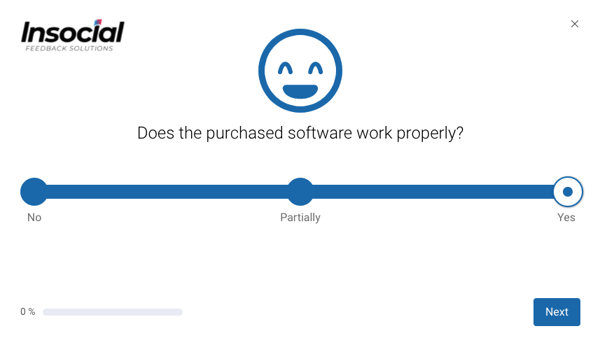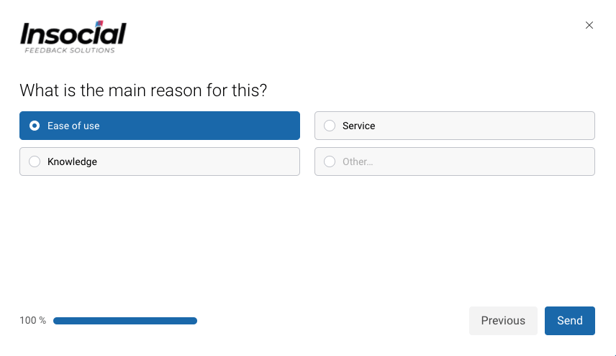
What was not evident within the ICT-sector 10 years ago, has now become an important factor within organizations. Namely, a good customer experience. Earlier, we wrote about the change from SLA (Service Level Agreement) to XLA (Experience Level Agreement), which also shows this shift. We see that more and more ICT organizations are shifting their focus to customer experience, and in doing so, they are building sustainable customer relationships. In this article, we inspire you with a number of sample questions that ICT organizations can ask their customers!
Feedback and ICT
An organization often has a permanent ICT supplier who manages its systems, software and network. We have made several sample questions that you can use at different touch points in the customer journey. From the moment a project is completed to feedback moments after a few months of use or a long-term relationship of several years. It is very important to ask for feedback structurally instead of just once. Only then do you get information you can work with and can you actually monitor the customer experience.
The right questions ICT organizations should be asking
What are the best questions to ask you customers as an ICT organization? How do you get the most valuable insights? And how do you find out which improvements you can best apply now? If you do not ask the right questions, you are wasting your time and especially that of the customer. Make sure you use the feedback moment optimally. Ask targeted questions and find out what you really want to know.
You can, of course, use the standard CX KPIs, such as the NPS or the CES. These are very valuable and offer a good opportunity to compare different interaction moments. But which in-depth questions do you ask in addition? Insocial is an expert in customer feedback solutions, and we would like to help you out. Therefore, we have made some sample questions for the ICT industry.
1. What did you think of the extent to which expectations were realised?
By asking this question, you can find out whether you have delivered work that fulfills the wishes and needs of the customer. In other words: whether you have delivered what you promised. This is essential information for measuring whether you are able to keep your promises to the customer. Expectations that are not met cause dissatisfaction and increase the risk of churn. When you do not fulfil your promises, you will have to adjust your promises or solve this problem by optimizing your processes. In this way, you can avoid this problem with future customers.
2. How do you describe the project result in one sentence?
By asking an open question, the respondent can still share their own ideas that may not have been presented in the previous questions. A kind of mini review of the customer! By adding 'in one sentence' you already indicate that it does not have to be a long, elaborate text, which will make the respondent more likely to give an answer.
3. Does the purchased software/equipment work properly?
When your ICT employee installs the software or equipment at a customer's site, you naturally want it to work flawlessly or bugs afterwards. Therefore, it is important to know whether the software is connected properly and works properly.
This question can be set up with a Likert scale with answer options of e.g. No - Partial - Yes. if your customers choose 'no' or 'partial', you can immediately ask a follow-up question, such as 'Can you describe what is wrong with the software/equipment?'. With this, you know immediately what is wrong, and you can call in the right person for a good follow up! 
4. A quick check to see if you are still satisfied!
A question as a kind of check-up is always nice for a customer. You can ask this question after, say, six months after the service has been provided. In this way, you keep in touch with your customers and maintain a long-term customer relationship! Customers are less likely to switch because you do not lose sight of them and solve problems proactively.
- What is the reason for your answer?
If you also want to know the reason behind the answer (which we strongly recommend), you can ask a question like the one above. By asking this question, you get further information and the reason behind the given answer of the respondent. You can then put down answer options such as the service, the quality of the equipment, the knowledge or other. This gives you insights into which company qualities score the highest and which still need improvement.


5. You have been using our service for x years now. Can you describe what you think of us? Are there any point for improvement?
Long-term customer relationships often consist of frequent and good contact. You know each other on a personal level, and you know how the customer is doing, but it is precisely from these relationships, who have known you for a long time, that you want to know what you can do even better. Make this a question with an open text field. This way, the customer can write down his or her though freely, and they are not pushed in one direction. You can learn a lot about your service, product and reputation from this kind of feedback. When the customer expresses a negative opinion, they give you the opportunity to solve this. So, make good use of this opportunity!
Different questions for different types of users
As an ICT organization, you have to deal with different types of users. You have your regular contacts with whom you have regular contact, but also your DMU. DMU stands for 'decision making unit'. These are contact persons within the customer's organization who have the power of decision (and therefore choose which parties to work with). But these are not always the people who experience the service of an ICT supplier. Therefore, it is important that the questions you ask are adapted to the role that someone has within an organization. Would you like to read more about this?
Download our free white paper on the four most valuable KPIs >



